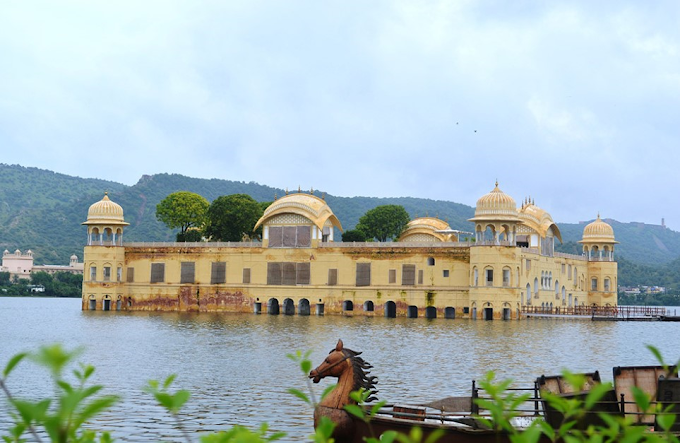Introduction to Holi Dahan
Holi Dahan, also known as Chhoti Holi, is an integral part of the vibrant Holi festival. This auspicious occasion symbolizes the victory of good over evil and is observed on the full moon night of the Phalguna month. The festival brings communities together, fostering joy, faith, and devotion. The sacred bonfire lit during Holi Dahan represents the burning away of negativity, paving the way for a fresh start filled with positivity.
The Legend Behind Holi Dahan
Holi Dahan is deeply rooted in Hindu mythology, with its origins linked to the legendary story of Prahlad and Holika. According to ancient scriptures, King Hiranyakashipu, a powerful demon king, wanted everyone to worship him as a god. However, his own son, Prahlad, remained a staunch devotee of Lord Vishnu.
Enraged by his son’s defiance, Hiranyakashipu plotted to kill Prahlad with the help of his sister, Holika, who had a magical boon that made her immune to fire. She tricked Prahlad into sitting on her lap inside a raging bonfire. However, due to divine intervention, Holika was burned to ashes, while Prahlad emerged unscathed. This event is a powerful reminder that righteousness and devotion always triumph over evil.
Rituals and Traditions of Holi Dahan
The preparation for Holi Dahan begins days in advance. Communities come together to collect wood, dried leaves, and other flammable materials for the bonfire. This gathering fosters unity among people, reinforcing the communal spirit of the festival.
On the evening of Holi Dahan:
- The Bonfire is Lit – A large bonfire is set up in an open area, symbolizing the burning of evil and negativity.
- Devotional Chants and Prayers – People sing hymns and offer prayers to seek divine blessings.
- Offerings to the Fire – Devotees throw coconuts, grains, and sweets into the flames as a sign of gratitude and purification.
- Circumambulation (Parikrama) – Many devotees walk around the fire seven times, praying for happiness and prosperity.
This ritual signifies the elimination of darkness and evil forces, bringing in light and positivity.
Significance of Holi Dahan
Holi Dahan holds deep spiritual and cultural importance. Some of its key significance includes:
- Symbol of Purification – The fire represents the burning away of past sins, evil thoughts, and negative energy.
- Victory of Truth – It reminds us that truth, faith, and devotion always prevail, no matter how powerful evil forces seem.
- Strengthening of Community Bonds – The collective preparation and celebration foster a sense of unity, togetherness, and mutual respect.
- Welcoming the Spring Season – Holi marks the arrival of spring, signifying new beginnings, prosperity, and abundance.
How Different Regions Celebrate Holi Dahan
Holi Dahan is celebrated with various regional variations across India. Here’s how different parts of the country observe this sacred ritual:
1. North India
In states like Uttar Pradesh, Bihar, and Rajasthan, large bonfires are set up, and people perform pujas, sing bhajans, and recite the story of Prahlad and Holika.
2. Maharashtra and Gujarat
People prepare special sweets like Puran Poli and Gujiya and offer them to the fire before distributing them among family and friends.
3. Punjab
In Punjab, Holi Dahan is celebrated with great zeal. The festival is linked to Lohri, another bonfire festival, and involves folk songs and dances.
4. South India
In Tamil Nadu and Karnataka, the festival is less centered around bonfires and focuses more on temple prayers and cultural performances.
5. West Bengal and Odisha
This festival is known as "Dol Jatra" in Bengal and Odisha, where idols of Radha and Krishna are carried in a grand procession before lighting the bonfire.
Precautions to Take During Holi Dahan
While Holi Dahan is a joyous occasion, safety measures should be observed to ensure a secure and responsible celebration:
- Choose a Safe Location – The bonfire should be set up in an open area, away from buildings, trees, and electric wires.
- Keep Fire Under Control – Avoid using excessive flammable materials to prevent the fire from spreading uncontrollably.
- Supervise Children – Children should be kept at a safe distance and should never be left unattended near the fire.
- Use Eco-Friendly Materials – Avoid burning plastics or harmful substances that contribute to air pollution and environmental damage.
- Emergency Preparedness – Have a bucket of water or sand nearby in case of accidental fire hazards.
The Connection Between Holi Dahan and Holi
Holi Dahan is a precursor to the main festival of colors, Holi. The bonfire symbolizes the elimination of evil, while the next day's celebrations bring color, joy, and togetherness. After burning negativity in the fire, people indulge in playing with colors, singing, dancing, and spreading happiness.
Holi Dahan and Its Relevance in Modern Times
Even in today’s fast-paced world, Holi Dahan holds immense significance. It teaches us:
- The Importance of Good Over Evil – A reminder to always choose righteousness over negativity.
- The Power of Faith – Just like Prahlad’s unwavering devotion, faith can help overcome any adversity.
- Environmental Consciousness – Encouraging eco-friendly celebrations to protect nature while upholding traditions.
Conclusion
Holi Dahan is more than just a festival; it is a spiritual and cultural beacon that celebrates the triumph of good over evil. As the fire burns away negativity, it paves the way for a joyous, colorful, and love-filled Holi. By embracing positivity, unity, and safety, we can make this festival even more meaningful.
So, as you light the Holi Dahan bonfire, remember its sacred significance and let go of all negativity, welcoming a new season of happiness, prosperity, and togetherness.










.png)



